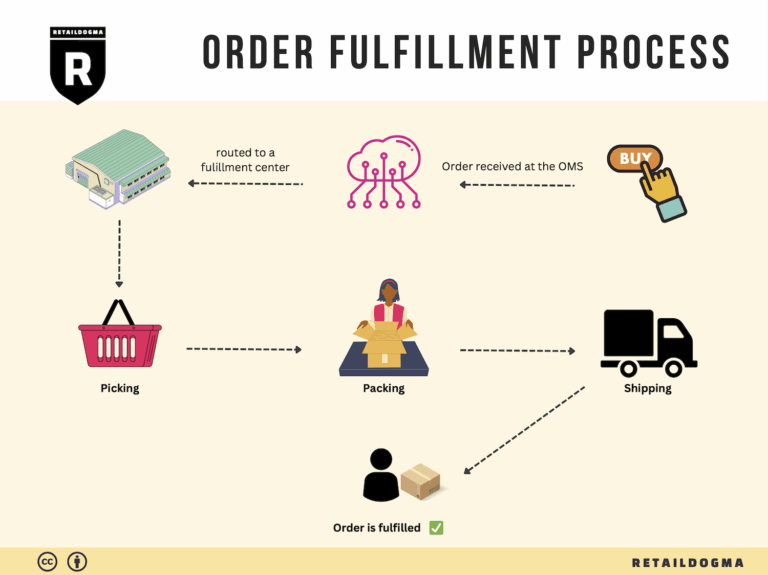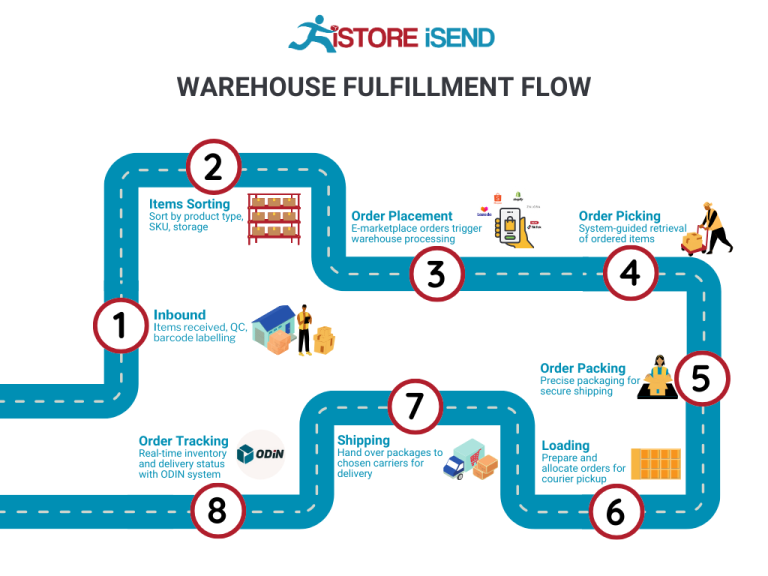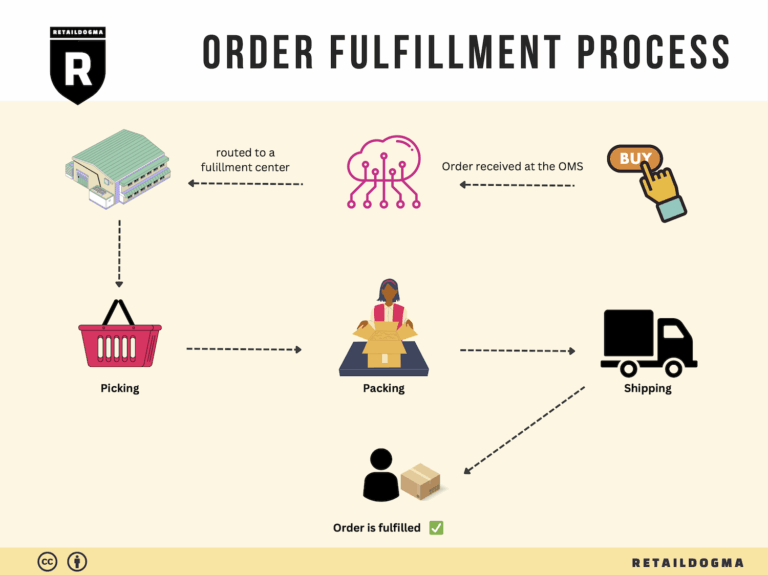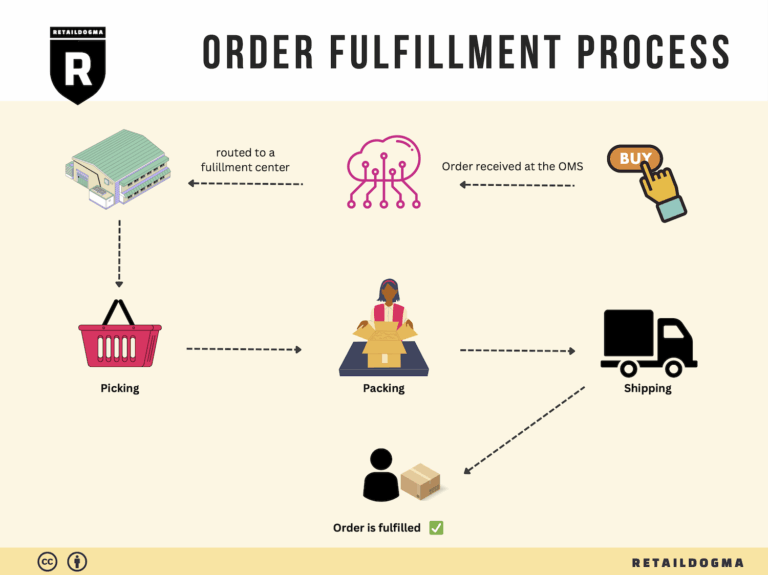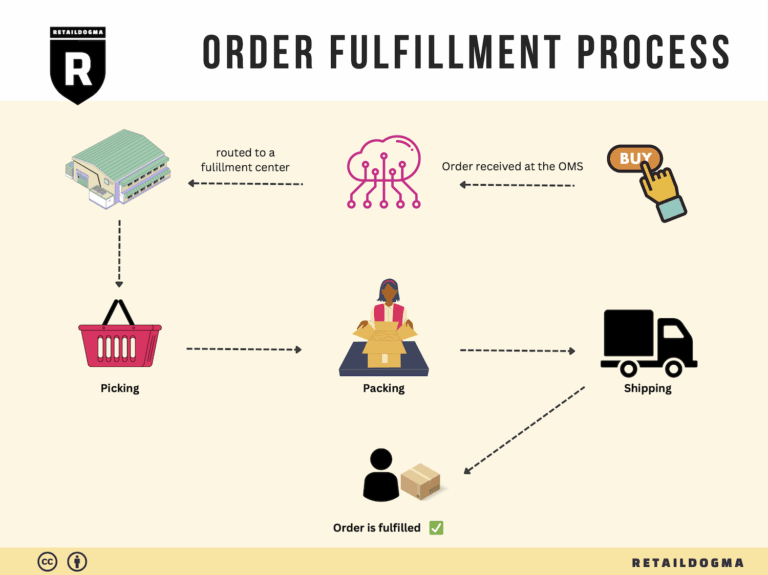Ecommerce Fulfillment Services: The Ultimate Guide (2025)
What is E-commerce Fulfillment? An Introduction for Growing Businesses
Growing an online business can be exhilarating, but it often comes with a significant challenge: the logistics of packing and shipping orders. As sales increase, many e-commerce business owners find themselves overwhelmed by the sheer volume of orders. This can lead to delays, errors, and ultimately, dissatisfied customers. Efficient order fulfillment is critical to maintaining customer satisfaction and scaling your operations effectively.
Fulfillment, in simple terms, is the process of getting a product from your inventory into the hands of your customers. This involves several steps, including receiving inventory, storing products, picking and packing orders, and shipping them out. For growing businesses, mastering this process is essential not only for operational efficiency but also for enhancing customer experience and driving repeat sales.
In this guide, we will explore various fulfillment models available to e-commerce businesses. You’ll learn about traditional methods, such as self-fulfillment, as well as more modern approaches like Third-Party Logistics (3PL) and Fulfillment by Amazon (FBA). Each model has its own set of advantages and challenges, and understanding these will help you determine which option best suits your business needs.
We will also delve into the core services that fulfillment partners typically offer, such as inventory management, order processing, packing, shipping, and returns handling. Knowing what services are available will enable you to make informed decisions about your logistics strategy.
Choosing the right fulfillment partner is another critical aspect we will cover. Factors to consider include location, technology integration, customer service, and scalability. A good partner will not only meet your current needs but also grow with you as your business expands.
Lastly, we will touch on pricing structures for fulfillment services. Understanding how fulfillment costs are calculated will help you budget effectively and maintain healthy profit margins.
The goal of this guide is to empower you with the knowledge to make smart, strategic decisions about your logistics. By optimizing your fulfillment process, you can focus on what truly matters: growing your business and delighting your customers.
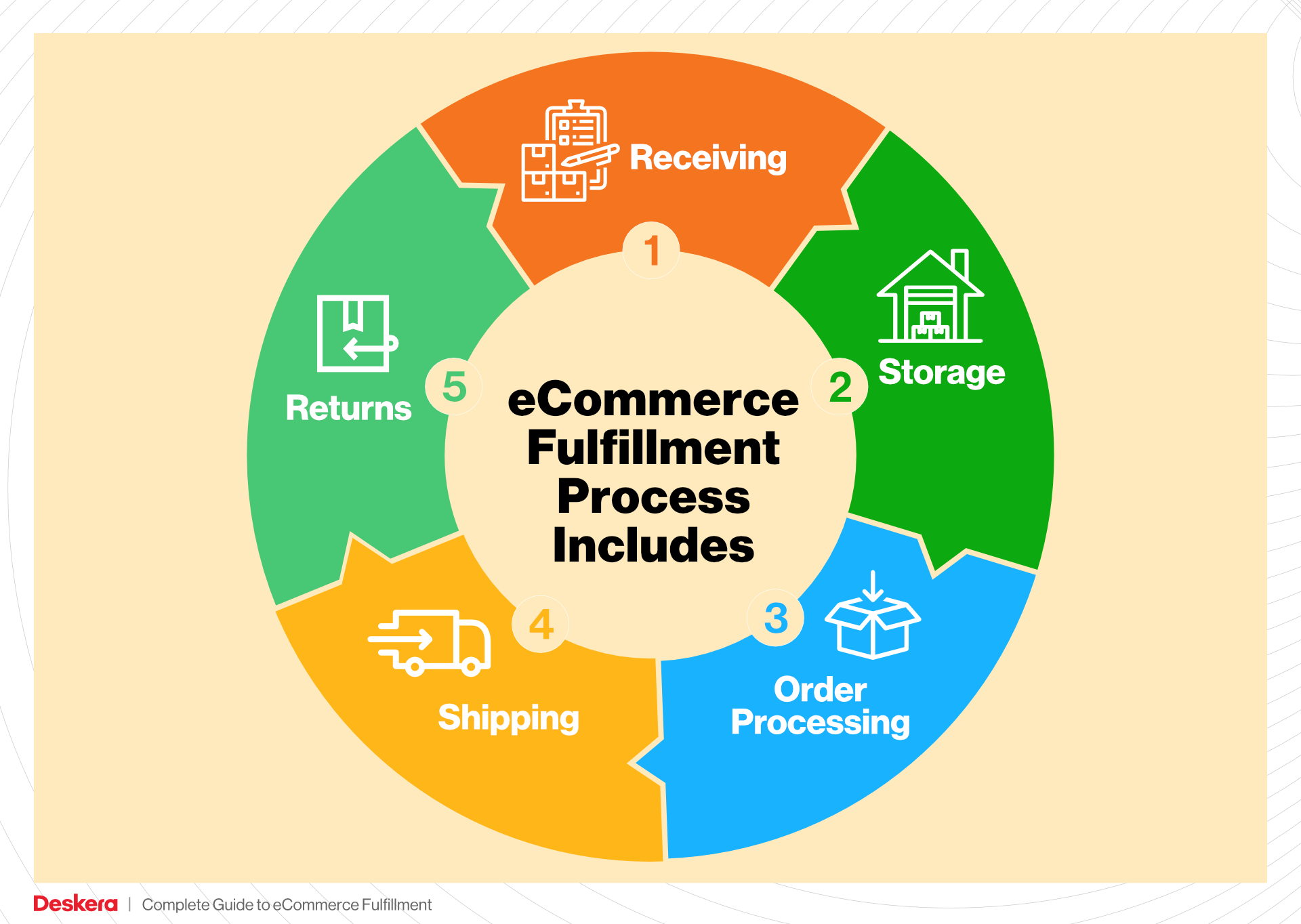
What You’ll Learn In This Guide
- What is E-commerce Fulfillment? An Introduction for Growing Businesses
- The Order Fulfillment Process: From ‘Buy’ Button to Customer’s Door
- Comparing Fulfillment Models: In-House vs. 3PL vs. Dropshipping
- A Deep Dive into Amazon FBA: Pros, Cons, and Who It’s For
- Core Services Offered by Fulfillment Centers
- How to Choose a Fulfillment Partner: A 6-Point Checklist
- Understanding Fulfillment Pricing: A Breakdown of Common Fees
- Frequently Asked Questions (FAQs) about Fulfillment
- Conclusion: Is Outsourcing Fulfillment the Right Move for Your Business?
- Important Disclaimer
The Order Fulfillment Process: From ‘Buy’ Button to Customer’s Door
1. Receiving Inventory
The first step in the order fulfillment process begins with receiving inventory. This stage involves the delivery of products from suppliers or manufacturers to your warehouse. It is crucial to ensure that the items received match the purchase orders in terms of quantity and quality. This verification process typically utilizes Stock Keeping Units (SKUs), which are unique identifiers for each product.
Upon arrival, your team should inspect the shipment for any damages and confirm that the received quantities align with the order documentation. Accurate receiving is vital as it sets the foundation for all subsequent steps in the fulfillment process. If discrepancies occur at this stage, they can lead to inventory inaccuracies, which may affect order fulfillment and customer satisfaction later on.
2. Warehouse Storage
Once the inventory has been received and verified, the next step is warehouse storage. This involves organizing the products in a way that maximizes space and ensures efficiency. Proper storage systems, such as shelving units and bins, help facilitate easy access to products.
Key terms associated with this phase include “FIFO” (First In, First Out) and “LIFO” (Last In, First Out) methods. FIFO is essential for perishable items, ensuring that older stock is sold before newer stock. Efficient warehouse storage not only saves time during order picking but also reduces the risk of damage and loss. A well-organized warehouse can significantly enhance operational efficiency, leading to faster order processing times and improved customer service.
3. Order Picking
The third step is order picking, which is the process of retrieving items from the warehouse to fulfill customer orders. When a customer makes a purchase, your system generates a pick list that details the items and their locations within the warehouse.
This step is critical because it directly impacts order accuracy and speed. Implementing technology such as barcode scanners can streamline the picking process, reducing errors and speeding up retrieval times. The importance of efficient order picking cannot be overstated; inaccuracies can lead to returns, increased shipping costs, and ultimately, dissatisfied customers. Efficient picking strategies, like zone picking or wave picking, can further enhance productivity and accuracy.
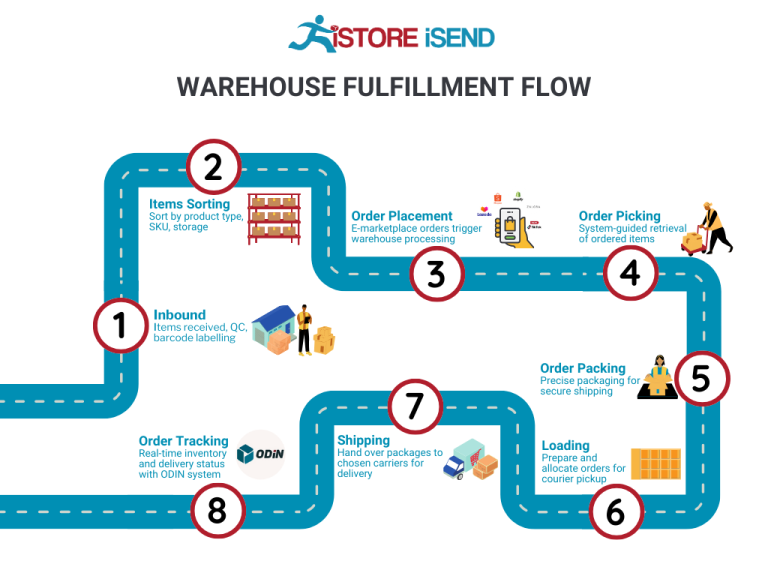
4. Order Packing
After items have been picked, the next phase is order packing. This involves securely packaging the products for shipment to ensure they arrive at the customer’s door in perfect condition. The packing process includes selecting appropriate packaging materials, creating packing slips, and labeling the packages for shipping.
Using the right packing materials is vital to protect the products during transit, especially for fragile items. Additionally, clear labeling helps prevent shipping errors. This step is significant because it not only affects customer satisfaction—due to the condition of the received products—but also impacts shipping efficiency. Incorporating features like automated packing systems can help streamline this process, allowing for faster turnaround times and better resource management.
5. Shipping & Delivery
The final step in the order fulfillment process is shipping and delivery. Once the order is packed, it is handed over to a shipping carrier for delivery to the customer. This stage is crucial as it represents the last touchpoint between your business and the customer.
Effective shipping management ensures that orders are dispatched on time and delivered as promised. Key terms in this stage include “last mile delivery,” which refers to the final leg of the delivery journey from a distribution center to the end customer. Timely and reliable shipping not only enhances customer satisfaction but also builds brand trust. Offering various shipping options, such as expedited delivery or free shipping thresholds, can further improve the customer experience and encourage repeat purchases.
In conclusion, understanding and optimizing each step of the order fulfillment process—from receiving inventory to shipping and delivery—is essential for e-commerce businesses looking to scale. By focusing on these areas, you can enhance efficiency, improve customer satisfaction, and ultimately drive growth in your business.

Comparing Fulfillment Models: In-House vs. 3PL vs. Dropshipping
Fulfillment Model Comparison
| Model | Who Handles Inventory | Best For (Business Stage) | Key Advantage | Key Disadvantage |
|---|---|---|---|---|
| In-House Fulfillment | Your Own Team | Established businesses | Full control over inventory and processes | High overhead costs and resource commitment |
| Third-Party Logistics (3PL) | 3PL Provider | Growing businesses | Scalable solutions and expertise | Less control over fulfillment processes |
| Dropshipping | Supplier | Startups or low-capital businesses | Low upfront investment and risk | Longer shipping times and lower margins |
In-House Fulfillment
In-house fulfillment involves managing your own warehouse and logistics operations. This model is best suited for established businesses that have the capital and infrastructure to handle their own inventory. The primary advantage of in-house fulfillment is the level of control it affords. Businesses can oversee every aspect of their operations—from inventory management to shipping and customer service. This can lead to improved efficiency, higher quality control, and the ability to customize packaging and branding to enhance customer experience.
However, in-house fulfillment comes with significant downsides. The initial setup costs can be high, requiring investments in warehouse space, technology, and staff. Additionally, managing inventory and logistics can divert focus from core business activities, leading to potential inefficiencies. Businesses must also be prepared for fluctuations in demand, which can lead to excess inventory or stockouts. As a result, this model is generally not recommended for startups or businesses that are still validating their market fit.
Third-Party Logistics (3PL)
Third-party logistics (3PL) providers handle warehousing, inventory management, and shipping for businesses. This model is particularly beneficial for growing businesses that need to scale quickly without the burden of managing logistics themselves. A key advantage of 3PL is access to expertise and technology that can streamline operations. 3PL providers often have established relationships with carriers, allowing for better shipping rates and faster delivery times.
Moreover, this model allows businesses to focus on their core competencies, such as product development and marketing, while leaving logistics to the experts. However, the main disadvantage is the loss of direct control over the fulfillment process. Businesses may face challenges in maintaining brand consistency, as packaging and shipping are handled by an external party. Additionally, there may be hidden costs associated with using a 3PL, such as fees for storage and order processing that can affect profit margins. Despite these concerns, many businesses find that the scalability and flexibility offered by 3PLs outweigh the downsides.
Dropshipping
Dropshipping is a fulfillment model where retailers sell products without holding any inventory. Instead, when a product is sold, the retailer purchases the item from a third-party supplier, who then ships it directly to the customer. This model is ideal for startups or businesses with limited capital, as it requires minimal upfront investment and eliminates the risks associated with unsold inventory.
The primary advantage of dropshipping is the low barrier to entry. Entrepreneurs can launch an e-commerce store with relatively little risk, as they do not need to invest in inventory upfront. Additionally, dropshipping allows for a wide variety of products to be offered without the need for warehousing, making it easier to test different markets and niches. However, dropshipping also comes with significant drawbacks. Shipping times can be longer, as products are often sourced from overseas suppliers. This can lead to customer dissatisfaction and increased return rates. Furthermore, profit margins are typically lower than in other fulfillment models, as suppliers often charge higher prices for dropshipped items. Retailers also have less control over the quality of the products and the shipping process, which can negatively impact brand reputation.
Conclusion
Choosing the right fulfillment model is critical for the success of an e-commerce business. Each model—whether in-house fulfillment, 3PL, or dropshipping—comes with its own set of advantages and disadvantages. Business owners must consider their current stage of growth, available resources, and long-term goals when making this decision. By carefully evaluating these factors, entrepreneurs can select a fulfillment strategy that not only meets their immediate needs but also supports sustainable growth in the future.
A Deep Dive into Amazon FBA: Pros, Cons, and Who It’s For
Understanding Fulfillment by Amazon (FBA)
Fulfillment by Amazon (FBA) is a logistics service provided by Amazon that allows sellers to store their products in Amazon’s fulfillment centers. Amazon takes care of storage, packaging, shipping, and customer service, allowing sellers to focus on other aspects of their business. When a customer places an order, Amazon handles the entire process, from picking the item from the shelves to delivering it to the customer’s doorstep. This service can significantly simplify the logistics of running an e-commerce business, especially for small to medium-sized sellers.
How FBA Works
-
Account Setup: To begin using FBA, sellers must create an Amazon Seller Account and enroll in the FBA program. This involves providing necessary business information and agreeing to Amazon’s terms of service.
-
Product Listing: Sellers list their products on Amazon and can choose to fulfill them through FBA. Each product must be compliant with Amazon’s guidelines, including packaging and labeling requirements.
-
Inventory Shipment: Sellers send their inventory to Amazon’s designated fulfillment centers. Amazon provides shipping labels and guidelines to ensure products arrive safely and efficiently.
-
Storage and Fulfillment: Once the inventory is received, Amazon stores the products until they are sold. When a customer places an order, Amazon picks, packs, and ships the product on behalf of the seller.
-
Customer Service and Returns: Amazon handles all customer service inquiries and returns for FBA orders, providing a seamless experience for both sellers and customers.
Pros of Fulfillment by Amazon (FBA)
-
Prime Eligibility: Products fulfilled through FBA are eligible for Amazon Prime, which can significantly increase visibility and sales. Prime members often prefer products that offer faster shipping options.
-
Customer Trust: Leveraging Amazon’s reputation can enhance customer trust. Shoppers are more likely to buy from a seller whose products are fulfilled by Amazon due to the perceived reliability and quality of service.
-
Multi-Channel Fulfillment: FBA is not limited to Amazon.com. Sellers can use FBA to fulfill orders from their own websites or other platforms, allowing for greater flexibility in managing sales channels.
-
Scalability: FBA allows sellers to scale their businesses quickly without the need for additional warehousing or logistics infrastructure. Amazon’s extensive network enables sellers to reach a larger audience with minimal effort.
-
Automated Processes: By outsourcing fulfillment to Amazon, sellers can automate many aspects of their logistics, freeing up time to focus on marketing, product development, and customer engagement.
Cons of Fulfillment by Amazon (FBA)
-
High Fees: FBA comes with various fees, including storage fees and fulfillment fees. These can accumulate quickly, especially for products with low margins or those that do not sell quickly.
-
Strict Inventory Rules: Amazon has stringent policies regarding inventory management. Sellers must adhere to guidelines on storage limits, labeling, and packaging. Failure to comply can result in additional charges or penalties.
-
Commingling Risks: FBA operates on a commingled inventory system, meaning that sellers’ products can be mixed with those of other sellers. This can lead to issues with counterfeit products or quality control, as the seller may not have full visibility over the inventory.
-
Loss of Control: By using FBA, sellers relinquish some control over their customer experience. Amazon handles customer service and returns, which may not always align with the seller’s brand values or customer service standards.
-
Dependency on Amazon: Relying heavily on FBA can create a dependency on Amazon’s platform. Changes in Amazon’s policies, fees, or algorithms can directly impact a seller’s business.
Who is FBA Best For?
Fulfillment by Amazon is best suited for:
-
Small to Medium-Sized Sellers: Businesses looking to scale without investing heavily in logistics and warehousing can benefit greatly from FBA’s infrastructure.
-
Sellers with High Sales Volume: Those who expect a high turnover rate for their products can offset the costs of FBA through increased sales.
-
E-commerce Entrepreneurs: New sellers who want to test the waters in e-commerce can leverage FBA to minimize upfront investment in logistics.
-
Brands Seeking Growth: Established brands looking to expand their market reach can use FBA to tap into Amazon’s vast customer base while maintaining their own sales channels.
-
Time-Constrained Business Owners: Entrepreneurs who want to focus on growing their business rather than managing logistics will find FBA to be an effective solution.
In conclusion, while Fulfillment by Amazon offers numerous advantages such as increased visibility, customer trust, and simplified logistics, it also comes with challenges like high fees and strict inventory controls. Evaluating whether FBA aligns with your business model and growth objectives is crucial for making an informed decision about your fulfillment strategy.
Core Services Offered by Fulfillment Centers
Inventory Management & Warehousing
Inventory management and warehousing form the backbone of any e-commerce fulfillment operation. Fulfillment centers provide businesses with a dedicated space to store their products, ensuring that inventory levels are maintained efficiently.
These centers utilize advanced Warehouse Management Systems (WMS) to track inventory in real time, allowing businesses to have a clear view of stock levels, product locations, and order statuses. This visibility is crucial for e-commerce businesses as it helps in preventing stockouts and overstock situations, both of which can lead to lost sales or increased holding costs.
The benefits of effective inventory management include improved cash flow, reduced holding costs, and enhanced customer satisfaction. By outsourcing warehousing to a fulfillment center, businesses can scale their operations without the burden of managing physical space and can focus on strategic growth initiatives instead. Moreover, fulfillment centers often have the infrastructure in place to handle seasonal fluctuations in demand, enabling businesses to adapt quickly to market changes.
Pick and Pack Services
Pick and pack services are integral to the order fulfillment process. When a customer places an order, fulfillment centers are responsible for picking the right items from the warehouse shelves and packing them securely for shipment.
This process involves several steps, including order processing, picking items, packing them, and preparing them for shipping. Fulfillment centers employ systematic picking techniques, such as batch picking or wave picking, to enhance efficiency and accuracy. Automation tools, such as barcode scanners and packing stations, further streamline this process.
The primary benefit of pick and pack services is the ability to fulfill orders quickly and accurately, which is vital for maintaining customer satisfaction. Fast shipping times can lead to repeat business and increased brand loyalty. Additionally, outsourcing this function allows e-commerce businesses to reduce labor costs and minimize errors, as fulfillment centers specialize in these operations and have trained staff to manage them effectively.
Kitting and Assembly
Kitting and assembly services involve combining multiple products into a single package or preparing a product for sale. This can include assembling items into a final product, creating gift sets, or bundling complementary products together.
Fulfillment centers often provide kitting services as part of their offering, allowing businesses to deliver unique product offerings without the need for additional labor and space. For example, if a business sells a skincare line, they might offer a bundle that includes a cleanser, moisturizer, and sunscreen. The fulfillment center can assemble these kits, pack them, and ship them as a single SKU.
The advantages of kitting and assembly services are twofold: they enhance product appeal and streamline the fulfillment process. By offering bundled products, businesses can increase average order value and attract more customers. Additionally, having a fulfillment center handle the assembly reduces the need for in-house labor, allowing businesses to allocate resources to other areas, such as marketing or product development.
Returns Management (Reverse Logistics)
Returns management, also known as reverse logistics, is a critical service offered by fulfillment centers. This process involves handling product returns from customers and managing the flow of returned goods back into inventory or disposal.
Fulfillment centers streamline the returns process by providing clear instructions for returns, processing returned items efficiently, and updating inventory levels in real time. They can also assess the condition of returned products to determine whether they can be restocked, refurbished, or need to be disposed of.
The benefits of effective returns management include improved customer satisfaction and retention. A smooth and straightforward returns process encourages customers to shop with confidence, knowing they can return items easily if needed. Additionally, efficient handling of returns minimizes losses for the business, as products can be quickly reintegrated into inventory or resold in other channels.
In conclusion, partnering with a fulfillment center offers e-commerce businesses a comprehensive suite of services that can enhance operational efficiency, improve customer satisfaction, and support scalable growth. By leveraging these core services—inventory management and warehousing, pick and pack services, kitting and assembly, and returns management—businesses can focus on their core competencies while ensuring their logistics operations run smoothly.
How to Choose a Fulfillment Partner: A 6-Point Checklist
Location & Warehouse Network
Importance: The geographical location of your fulfillment partner is crucial for optimizing shipping times and reducing costs. A strategically located warehouse network can significantly enhance your ability to deliver products quickly and efficiently to your customers.
Questions to Ask:
– Where are your fulfillment centers located, and how do those locations align with my target markets?
– Do you have multiple warehouses to facilitate quicker shipping and distribution?
– What is your average shipping time to my primary customer locations?
Technology & Integrations
Importance: In today’s e-commerce landscape, leveraging technology is vital for streamlined operations. A fulfillment partner should have advanced systems for inventory management, order processing, and shipping. Integrations with your existing e-commerce platforms can also save you time and reduce errors.
Questions to Ask:
– What technology do you use for order management and inventory tracking?
– Can your systems integrate with my e-commerce platform (e.g., Shopify, WooCommerce)?
– How do you handle inventory updates, and how real-time is this data?
Specializations (e.g., Cold Storage, Oversized Items)
Importance: Depending on your product type, you may need a partner that specializes in specific fulfillment needs, such as cold storage for perishables or handling oversized items. Understanding these capabilities can prevent logistical challenges.
Questions to Ask:
– Do you have specialized storage options for my product types?
– What experience do you have in handling and shipping products similar to mine?
– Are there any additional costs associated with special handling or storage requirements?
Scalability & Capacity
Importance: As your business grows, your fulfillment needs will likely change. Choosing a partner with the capacity to scale alongside your business is essential to avoid service interruptions and logistical challenges during peak seasons.
Questions to Ask:
– How do you manage increased order volumes during peak seasons?
– Can you provide examples of how you’ve scaled services for other clients?
– What are your capabilities regarding seasonal inventory fluctuations?
Pricing and Contracts
Importance: Understanding the pricing structure and contract terms of your fulfillment partner is vital for budgeting and ensuring you get the best value. Hidden fees can significantly impact your overall costs, so clarity is key.
Questions to Ask:
– What is your pricing structure, and what services are included?
– Are there any additional fees for services such as returns management or special packaging?
– What are the contract terms, and is there flexibility if my needs change?
Customer Support & Reviews
Importance: Exceptional customer support can make a significant difference in your fulfillment experience. A partner that offers reliable support ensures that any issues are resolved quickly, minimizing disruptions to your operations. Additionally, checking reviews and testimonials can provide insights into their reliability and service quality.
Questions to Ask:
– What customer support options do you offer (e.g., phone, email, chat)?
– How quickly can I expect a response to inquiries or issues?
– Can you provide references or case studies from other clients, particularly those in my industry?
Conclusion
Choosing the right fulfillment partner is a critical decision that can significantly influence your e-commerce operations. By using this checklist, you can ensure that you thoroughly evaluate potential partners based on crucial factors such as location, technology, specializations, scalability, pricing, and customer support. Taking the time to ask the right questions will help you make an informed choice that aligns with your business goals and enhances your customer experience.
Understanding Fulfillment Pricing: A Breakdown of Common Fees
Initial Setup Fees
When partnering with a fulfillment service, businesses often encounter initial setup fees. These fees cover the costs associated with onboarding your account, which may include system integration, software configuration, and the initial setup of your inventory in their warehouse management system (WMS). The exact fee can vary widely depending on the provider and the complexity of your operations.
Typically, setup fees can range from a few hundred to several thousand dollars, depending on the scale of your business and the services required. Factors influencing the cost include the number of SKUs (stock keeping units) you have, the level of customization needed for your WMS, and any specific integrations with your e-commerce platform.
Receiving Fees
Receiving fees are charged each time your inventory arrives at the fulfillment center. This fee covers the costs associated with unloading, inspecting, and entering your products into the system.
Calculating receiving fees typically depends on the volume of goods being received and the complexity of the receiving process. For instance, some providers charge a flat fee per shipment, while others may charge based on the number of pallets or units received. It’s essential to clarify what is included in this fee; some companies may also charge for additional services, such as product repackaging or quality inspections.
Storage Fees (per pallet/bin)
Storage fees are incurred for keeping your inventory in the fulfillment center. These fees can be charged on a per-pallet or per-bin basis, depending on how your inventory is organized.
Calculating storage fees generally involves a monthly charge based on the amount of space your products occupy. For example, if a pallet takes up one square foot of space, you may be charged a monthly rate per pallet. Some fulfillment centers also offer tiered pricing, where the cost per pallet decreases as the number of pallets increases.
It’s important to monitor your inventory levels closely, as overstocking can lead to unnecessary storage fees. Many providers also charge for long-term storage, which can apply if your products remain in the warehouse for an extended period (typically over 90 days).
Pick & Pack Fees (per item/order)
Pick and pack fees are charged for the labor involved in picking your products from the shelves and packing them for shipment. These fees can be structured in various ways, including a per-item fee or a flat fee per order.
For example, a fulfillment center might charge $1.00 per item picked and packed, meaning that if an order contains three items, the total pick and pack fee would be $3.00. Some providers may also charge additional fees for special packing requirements, such as custom packaging or kitting services (where multiple items are bundled together).
Understanding how your fulfillment provider calculates these fees can help you budget more effectively and optimize your inventory management strategies.
Shipping Fees
Shipping fees are perhaps the most variable costs associated with fulfillment services. These fees depend on several factors, including the shipping method (standard, expedited, etc.), the destination, and the weight or dimensions of the package.
Most fulfillment centers work with various carriers (like FedEx, UPS, or USPS) and can often negotiate better rates due to their shipping volume. Some providers may charge a flat fee for standard shipping, while others calculate shipping costs based on real-time rates from the carriers.
To minimize shipping fees, consider consolidating orders or using regional distribution centers to reduce distance and costs. Additionally, inquire if your fulfillment partner offers any discounts or programs to help save on shipping.
Tips for Getting an Accurate Quote
-
Be Detailed: When requesting quotes, provide as much detail as possible about your inventory, expected order volumes, and specific services you require. This helps fulfillment centers provide a more accurate estimate.
-
Ask About Hidden Fees: Ensure you understand all potential fees, including those for returns, long-term storage, or additional services. Clarifying these costs upfront can prevent surprises later.
-
Compare Multiple Providers: Don’t settle for the first quote you receive. Comparing quotes from multiple fulfillment partners can help you find the best balance of cost and service quality.
-
Negotiate: Many fulfillment providers are open to negotiation, especially if you have a large volume of business. Don’t hesitate to discuss pricing structures and see if there is room for improvement.
-
Request a Trial Period: If possible, ask for a trial period to evaluate the services and understand the actual costs before committing to a long-term contract.
By understanding these common fees and how they are calculated, you can better manage your fulfillment costs and enhance your overall operational efficiency.
Frequently Asked Questions (FAQs) about Fulfillment
1. What is NSC LA Fulfillment?
NSC LA Fulfillment is a logistics and fulfillment service provider that specializes in managing the storage, picking, packing, and shipping of products for e-commerce businesses. It aims to streamline the supply chain process, allowing businesses to focus on growth while ensuring timely delivery of products to customers.
2. What is the difference between a warehouse and a fulfillment center?
A warehouse is primarily a storage facility where goods are kept until they are needed. In contrast, a fulfillment center is a specialized type of warehouse that focuses on order processing, including picking, packing, and shipping products directly to customers. Fulfillment centers are designed to handle high volumes of orders efficiently and typically provide additional services such as inventory management and returns processing.
3. What is a 3PL (Third-Party Logistics)?
A 3PL, or Third-Party Logistics provider, is a company that offers outsourced logistics services, which can include transportation, warehousing, inventory management, order fulfillment, and distribution. Businesses partner with 3PL providers to leverage their expertise and resources, allowing them to scale operations without the need to invest in their own logistics infrastructure.
4. How much do fulfillment services cost?
The cost of fulfillment services can vary widely based on factors such as order volume, product type, storage needs, and specific services required. Typically, fees may include storage costs, pick and pack fees, shipping costs, and additional charges for value-added services like kitting or custom packaging. It’s advisable to request a quote from NSC LA Fulfillment to understand the specific pricing structure based on your business needs.
5. How does NSC LA Fulfillment ensure timely delivery?
NSC LA Fulfillment employs efficient order processing systems and logistics management practices to ensure timely delivery. This includes inventory management, optimized shipping routes, and partnerships with reliable carriers. By utilizing technology and experienced personnel, they strive to meet or exceed delivery expectations for their clients.
6. Can NSC LA Fulfillment handle international shipping?
Yes, NSC LA Fulfillment can manage international shipping, providing services that ensure compliance with customs regulations and efficient delivery to global destinations. This capability is essential for e-commerce businesses looking to expand their market reach beyond domestic borders.
7. What types of businesses can benefit from NSC LA Fulfillment services?
NSC LA Fulfillment caters to a wide range of businesses, including small to medium-sized e-commerce retailers, large chain supermarkets, and brands looking for reliable logistics support. Any business that requires efficient order fulfillment and inventory management can benefit from their services.
8. What technology does NSC LA Fulfillment use to manage orders?
NSC LA Fulfillment utilizes advanced warehouse management systems (WMS) to track inventory levels, manage order processing, and streamline shipping operations. This technology allows for real-time visibility of inventory, order status, and analytics, helping businesses make informed decisions.
9. How can I get started with NSC LA Fulfillment?
To get started with NSC LA Fulfillment, you can reach out to their sales team through their contact information on their website. They will provide you with details on their services, pricing, and help you understand how to integrate their fulfillment solutions with your e-commerce platform.
10. What should I consider when choosing a fulfillment partner?
When choosing a fulfillment partner, consider factors such as their experience in your industry, the scalability of their services, technology capabilities, shipping options, customer service quality, and pricing structure. It’s also beneficial to check reviews and testimonials from other businesses to gauge their reliability and service quality.
Conclusion: Is Outsourcing Fulfillment the Right Move for Your Business?
Key Benefits of Outsourcing Fulfillment
Outsourcing your fulfillment needs can be a game-changer for your e-commerce business. One of the most significant advantages is time savings. By partnering with a dedicated fulfillment service, you can free up valuable hours that would otherwise be spent on inventory management, packing, and shipping. This allows you to focus on core business activities like marketing, product development, and customer engagement.
Another crucial benefit is scalability. As your business grows, so do your fulfillment requirements. A reliable fulfillment partner can seamlessly scale operations to accommodate increased order volumes without sacrificing speed or service quality. This flexibility is vital in today’s fast-paced e-commerce environment, where customer expectations are continually evolving.
Moreover, leveraging the expertise of a fulfillment provider can enhance your operational efficiency. These companies specialize in logistics and have the knowledge and technology to optimize processes, reduce shipping costs, and improve delivery times. Their experience in managing returns, inventory, and customer service can significantly enhance the overall customer experience, leading to higher satisfaction and repeat business.
Choosing the Right Partner
However, it is essential to choose the right fulfillment partner that aligns with your business goals. The wrong choice can lead to inefficiencies and customer dissatisfaction, undermining the advantages of outsourcing. Conduct thorough research, assess service offerings, and ensure that they have a proven track record in your industry.
Call to Action
To determine if outsourcing fulfillment is the right strategic move for your business, consider conducting an audit of your current shipping process. Identify bottlenecks, evaluate costs, and analyze how much time is spent on logistics. This assessment will help you understand whether partnering with a fulfillment service could enhance your operational efficiency and support your growth ambitions. Start the conversation today, and unlock the potential of a streamlined fulfillment strategy.
Important Disclaimer
⚠️ Important Disclaimer
The information in this guide is for educational purposes. Fulfillment services, pricing, and platform features change frequently. Always conduct your own due diligence and consult with providers directly before making business decisions.

